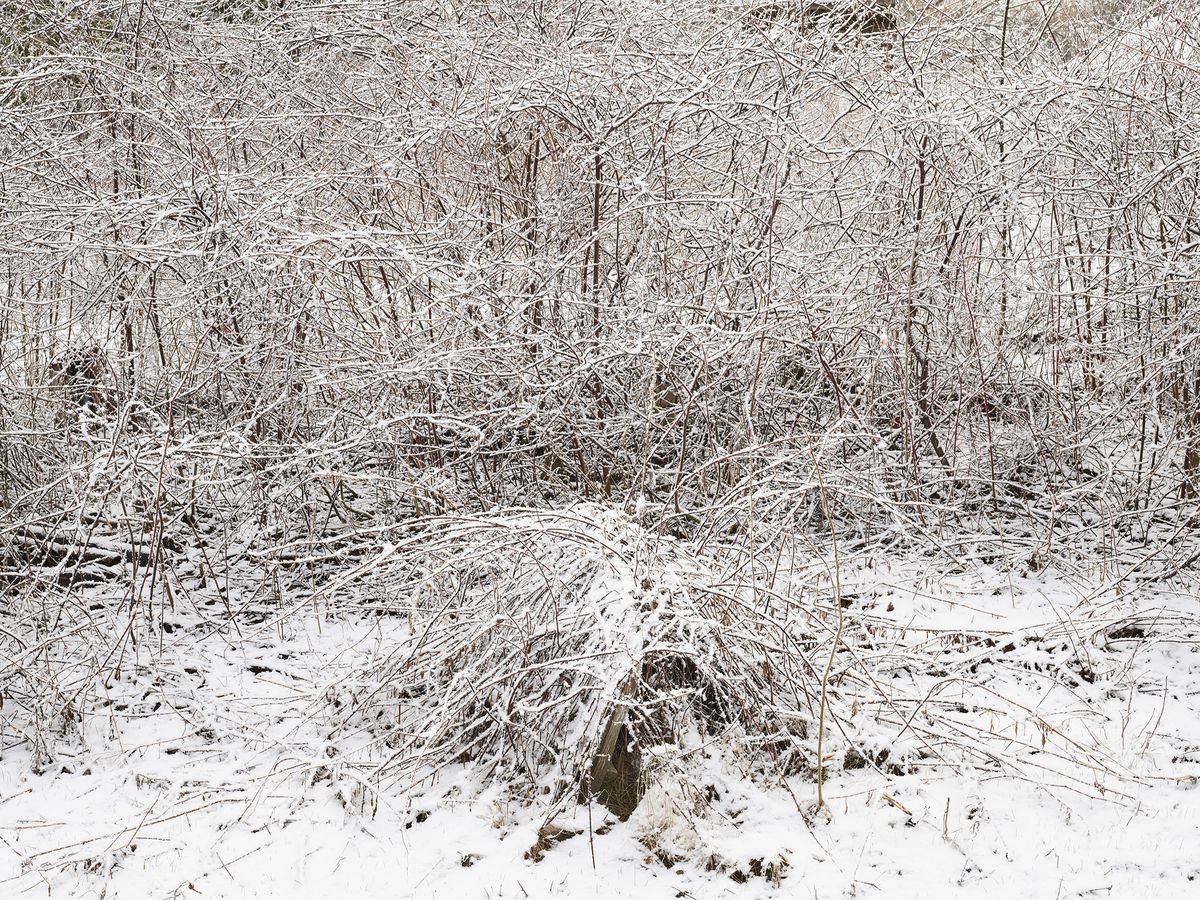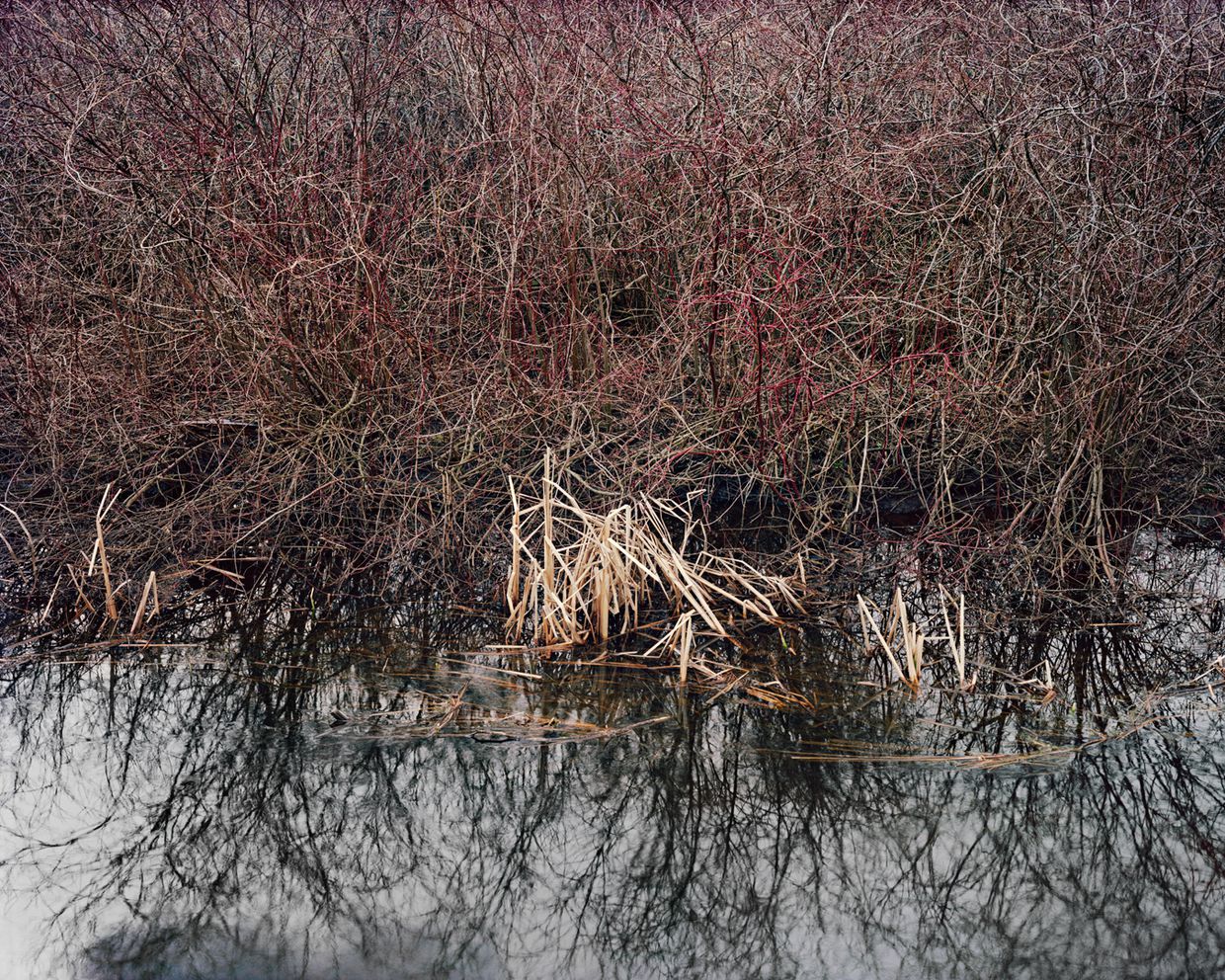The Canadian artist writes that ‘the global call to action against COVID-19 is a test run for our inevitable fight with climate change – and that time is looming’

Spring Landscape Study, Ontario, Canada, April 2020. This photograph is from a new body of work Edward Burtynsky is creating while in isolation, focused on natural landscapes, with proceeds going to support the arts in Canada.
© EDWARD BURTYNSKY, COURTESY NICHOLAS METIVIER GALLERY, TORONTO/THE GLOBE AND MAIL
Edward Burtynsky is an internationally renowned photographer whose work traces the impact of massive human systems on the planet.
It feels a little surreal to be commemorating the 50th anniversary of Earth Day in the middle of this unprecedented global crisis. Admittedly, I had envisioned this day much differently, yet with COVID-19 forcing us all into isolation, the message of Earth Day seems more urgent than ever.
My 40-year career as an artist has taken me on a journey around our planet in search of the largest examples of human systems expressed upon the land and sea. I have been to many places that very few of us have any reason to go – the places where we wrest out the things we need from nature to propel our human destiny. My first trip to China in 2002 took me to Wuhan en route to photograph along the Yangtze River, where entire cities and landscapes were being commandeered and flattened to make way for the building of the Three Gorges Dam. So, when the pictures first emerged of the coronavirus lockdown in Wuhan months ago, never did I imagine seeing cities being shut down in this new and devastating way – or that we would soon experience this contagion all over the world.
There’s no doubt that the ravenous human appetite to conquer nature has compelled us to encroach on natural habitats and biodiversity in an ever-expanding way, and that this has led us to where we are today – isolated at home, with a new pathogen determined to wreak global havoc. It seems the paradigm has shifted: Where humans once had our collective boot on nature’s neck, we now find ourselves with nature’s boot firmly pressed against ours.
On this 50th anniversary of Earth Day, I find myself in northern Ontario. This familiar landscape has become hugely important to my career. It’s the place where I recalibrate and consider nature, and where I first came to understand that we do not own this land – we merely serve as its steward, taking care of it and passing it on to the next generation. It has become an inflection point for me, a stark reference for when I’m able to go out into the world and see humanity shaping nature at scale through industry, urban sprawl and the sheer impact of the nearly eight-billion-large human population dominating our planet.
Rural Canada has taught me many things, and as I reflect on humanity’s impact on the planet, the most profound lesson now is that our reach into nature has gone too far. The global call to action against this virus is a test run for our inevitable fight against climate change. And that time is looming.

Landscape Study #4, Ontario, Canada, 1981.
© EDWARD BURTYNSKY, COURTESY NICHOLAS METIVIER GALLERY, TORONTO
Over the past few weeks, I have been inspired to go back to my origins of photographing in these natural landscapes – viewing nature as a kind of painting. Looking at abstract expressionism and trying to find that place through photography. Going back to the shrubs and bushes of the forest. Going back to my home, nature.
My hope is that during this time in isolation I am able to create a suite of images looking at nature, with proceeds going directly to support the arts sector in Canada. The arts have taken an oversized hit during these times and will continue to suffer enormously because of this crisis. And yet, it is the artists, musicians, filmmakers and performers to whom we are all turning for catharsis, relaxation, distraction, entertainment and, perhaps most importantly, hope. As the great artist Gerhard Richter once said, “Art is the highest form of hope.” Artists now need our support as much as we need theirs.
There will be a lot of pain felt out there over the next months, as we regroup, as we try to gather in spaces and share them together again. I don’t know what those next few months will bring, but in this time of isolation and contemplation, I can be assured of one very important thing: The future of life on this planet rests in our hands. There might one day soon be a vaccine for this virus, but there’s no vaccine for climate change.
EDWARD BURTYNSKY
CONTRIBUTED TO THE GLOBE AND MAIL
The Globe and Mail, April 22, 2020
